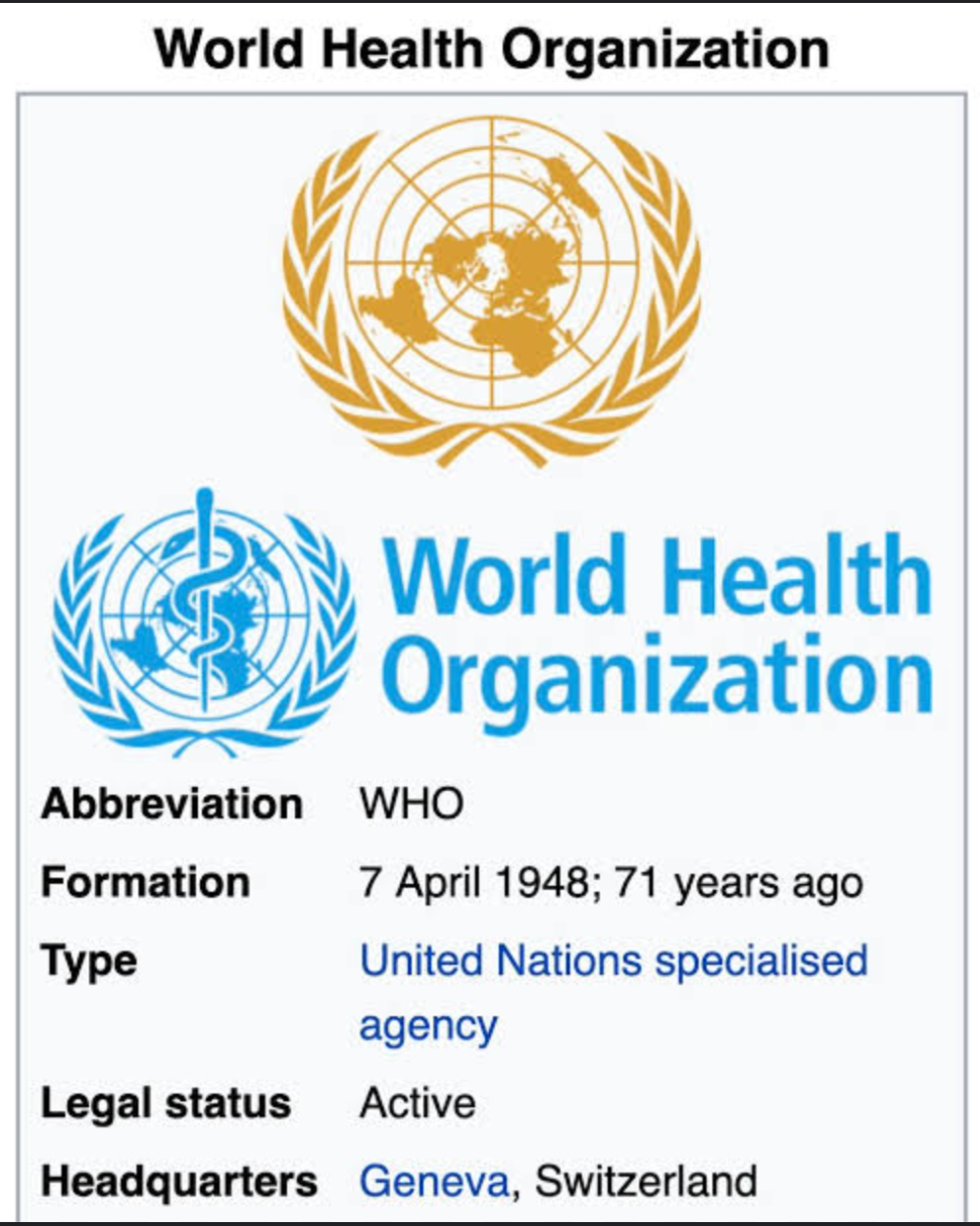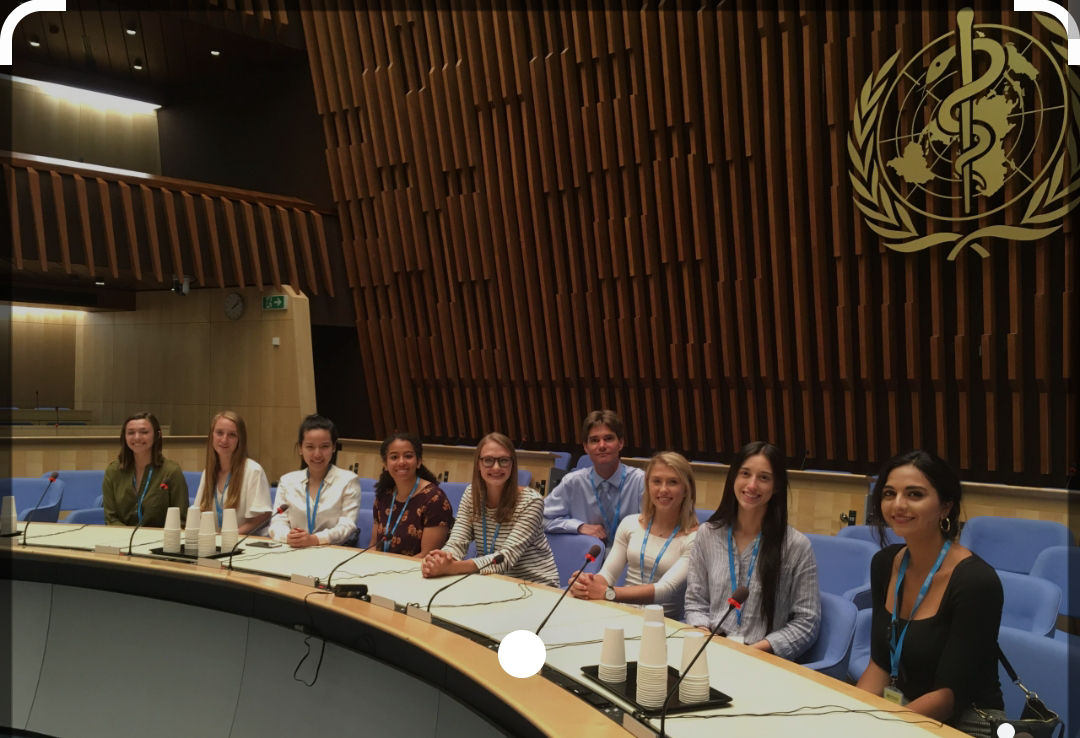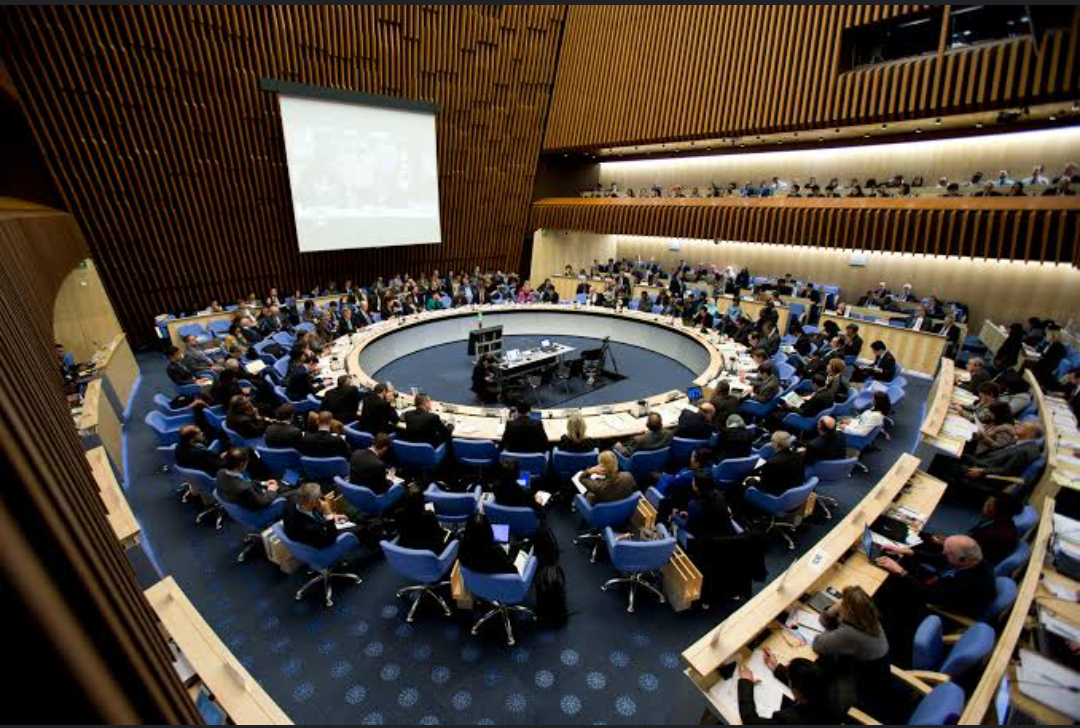The World Health Organization(WHO) is an organization for mutual cooperation on the health related problems of the countries of the world and for the development of human health related understanding. The World Health Organization has 194 member states and two associate members. It is a subsidiary unit of the United Nations. This institution was established on 7 April 1948.
The World Health Organization (WHO) is a specialized agency of the United Nations responsible for international public health. It was established on April 7, 1948 with its headquarters in Geneva(Switzerland). The WHO's primary goal is to promote health, monitor global health trends, and provide technical assistance to countries in order to improve healthcare systems and public health outcomes worldwide. WHO official site is www.who.int
Key Functions of the World Health Organization (WHO):
1. Leadership and Coordination: The WHO sets norms and standards, develops policies, and provides leadership on global health matters... It coordinates international efforts in response to health emergencies and promotes cooperation among member states.
2. Health Research and Guidance: The WHO conducts scientific research to generate evidence-based guidelines and recommendations on various health topics. It provides technical support and guidance to member states for implementing effective health interventions and strategies.
3. Health Emergency Response: The WHO plays a crucial role in responding to public health emergencies and outbreaks of diseases. It coordinates emergency operations, deploys experts and resources, and provides guidance to countries to prevent and control the spread of diseases.
4. Health Systems Strengthening: The WHO supports countries in strengthening their healthcare systems to deliver equitable, accessible, and quality healthcare services. It provides technical assistance, promotes health workforce development, and advocates for universal health coverage.
5. Disease Control and Prevention: The WHO leads global efforts to control and prevent communicable diseases such as HIV/AIDS, malaria, tuberculosis, and vaccine-preventable diseases. WHO also addresses non-communicable diseases like cancer, diabetes, and cardiovascular diseases through prevention and control measures.
6. Health Promotion and Advocacy: The WHO promotes health education, awareness, and behavior change campaigns to prevent diseases and promote healthy lifestyles. It advocates for policies and interventions that address social determinants of health and reduce health inequalities.
7. International Health Regulations: The WHO oversees the implementation of the International Health Regulations (IHR), a legally binding framework that aims to prevent the international spread of diseases and ensure effective responses to public health emergencies.
It's important to note that the information provided here is based on the WHO's role and functions up until my knowledge cutoff in September 2021. For the most up-to-date and specific information, I recommend visiting the official WHO website....
General Information of WHO:
The World Health Organization (WHO), the specialized agency of the United Nations for the health sector, was established in the year 1948.
Its headquarter is located in Geneva, (Switzerland).
Currently 194 countries are members of WHO. It has offices in 150 countries as well as six regional offices.
It is an intergovernmental organization and generally works in collaboration with the Ministries of Health of its member states.
WHO provides leadership on global health issues, shapes the health research agenda and sets various norms and standards.
In addition, WHO articulates evidence-based policy options, provides technical assistance to countries, and monitors and evaluates health trends.
WHO started work from April 7, 1948, so currently World Health Day is celebrated every year on April 7.
Objective/Function:
To act as the directing and coordinating authority on international health related work.
Establish and maintain effective cooperation with the United Nations, specialized agencies, government health administrations, professional groups, and other organizations that are leaders in the field of health.
Providing assistance to strengthen health services at the request of governments.
To promote collaboration among scientific and professional groups that contribute to the advancement of health...
Operation of WHO:
WHO is administered through the following organizations
world health assembly
(World Health Assembly):
The World Health Assembly is made up of delegates representing the member states.
Each member is represented by not more than three representatives, one of whom is designated as the chief representative.
These delegates are selected from amongst the most qualified persons on the basis of their technical competence in the field of health as they are preferential representations of the national health administrations of the member states.
The World Health Assembly meets in regular annual sessions and sometimes in special sessions.
It is organized annually at the headquarters of WHO, i.e. Geneva, Switzerland.
The specific health agenda prepared by the Executive Board remains the focus of this gathering.
The Vidhan Sabha of the year 2022 is the first in-person gathering since the start of the Covid-19 pandemic.
In May 2022, the 75th session of the World Health Assembly was held at the World Health Organization (WHO).
Functions of the World Health Assembly:
The World Health Assembly determines the policies of the WHO.
It monitors the financial policies of the organization and reviews and approves the budget.
It reports to the Economic and Social Council on any agreements reached between the WHO and the United Nations.
Secretariat
(The Secretariat):
The Secretariat comprises the Director General and such technical and administrative staff as are considered necessary for the organization.
The Director General of the World Health Assembly is appointed on the basis of nomination by the Board in accordance with the conditions laid down by the World Health Assembly.
Membership & Co-Membership:
Members of the United Nations can become members of this organization.
Regions or regional groups that are not responsible for conducting international relations may be nominated by the Health Assembly as associate members....













No comments:
Post a Comment